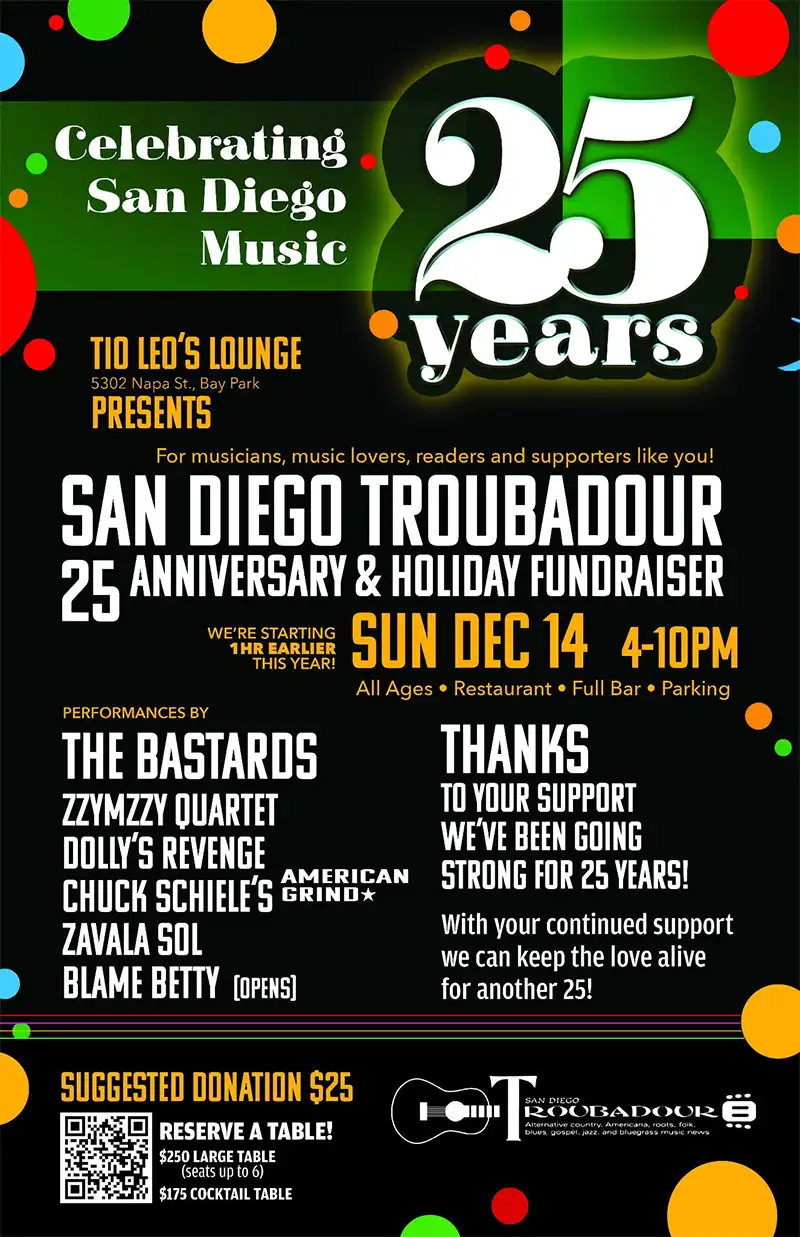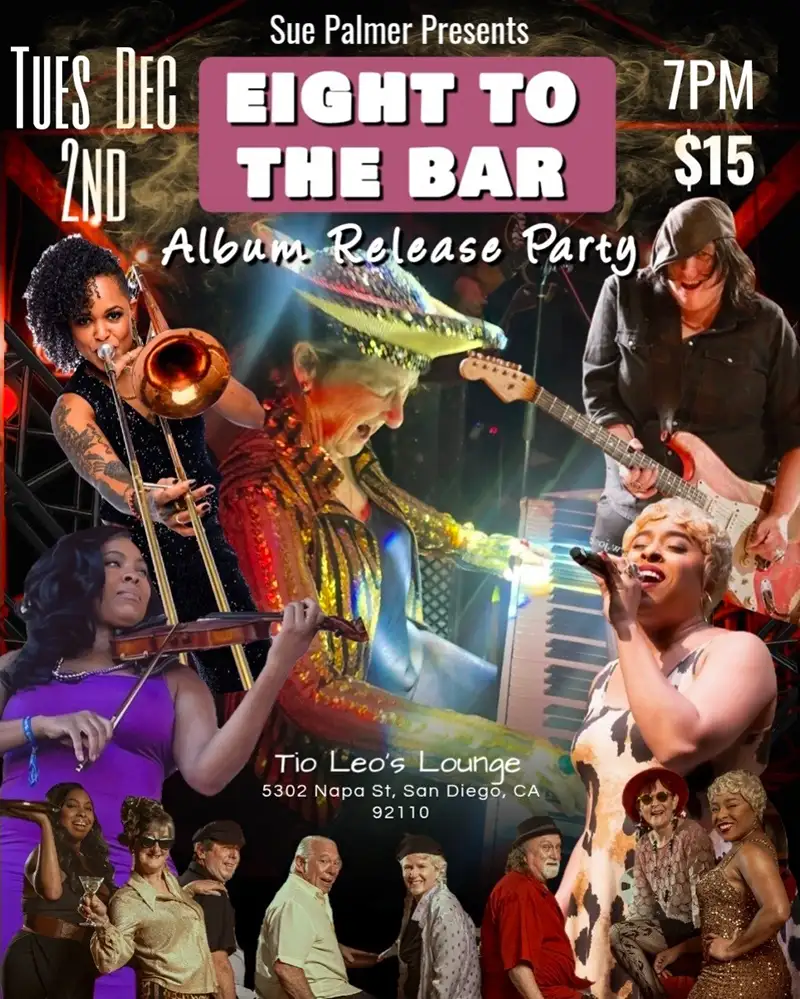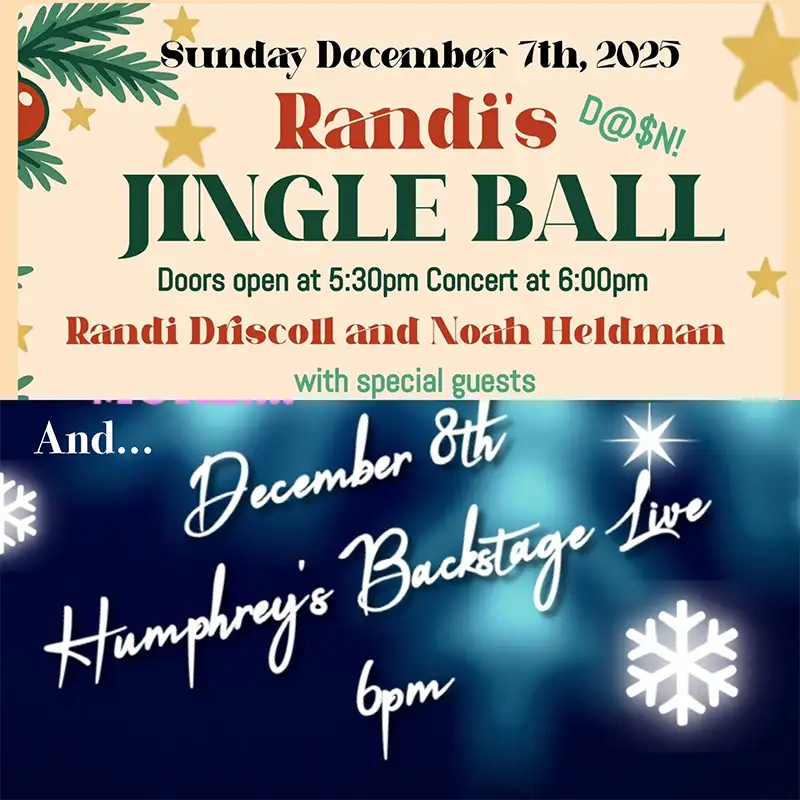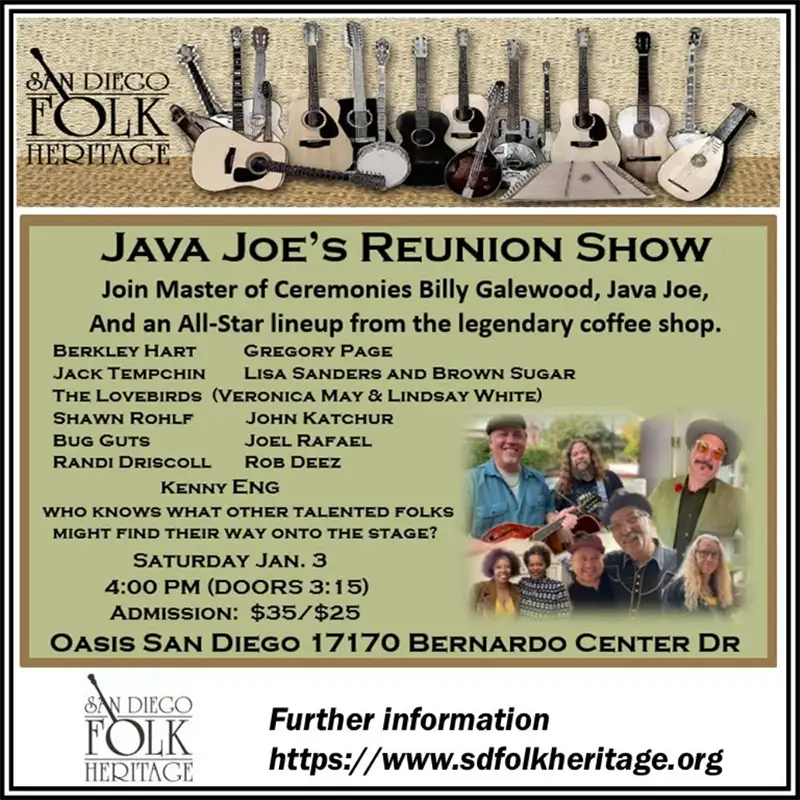SUE'S SPOTLIGHT: Women in Blues and Jazz
Women in Jazz and Blues: Marian McPartland, Hadda Brooks, and Camille Howard
Blues and jazz are America’s original contribution to world culture. Because women (and others) have been consistently left out of the history books, it has been my passion to invoke their memory when appropriate. Some were so good, they can’t be ignored—people like Sarah Vaughn, Ella Fitzgerald, Bessie Smith, Aretha Franklin, Bonnie Raitt, and Nina Simone to name a few. I would like to refresh or highlight the contributions of some of my favorites.
MARIAN McPARTLAND
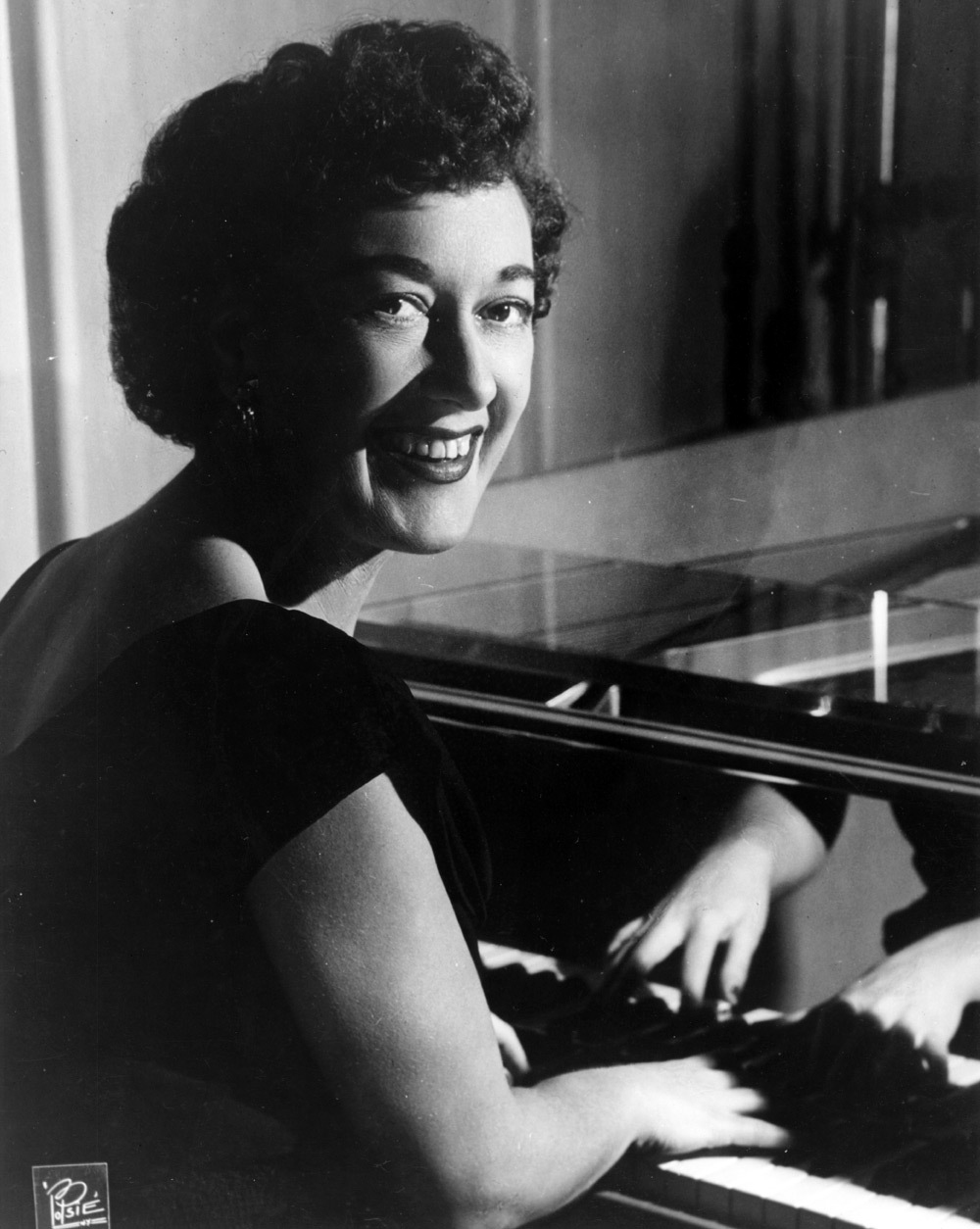
Marian McPartland, circa 1970. Photo by Michael Ochs.
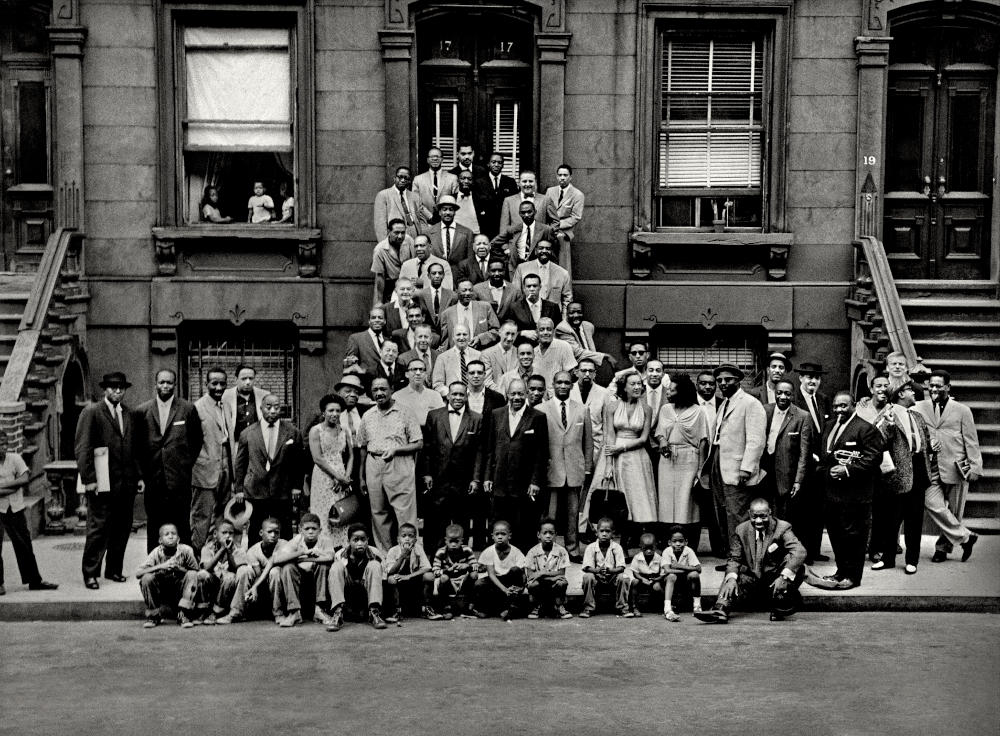
A Great Day in Harlem, 1958. Photo by Art Kane.
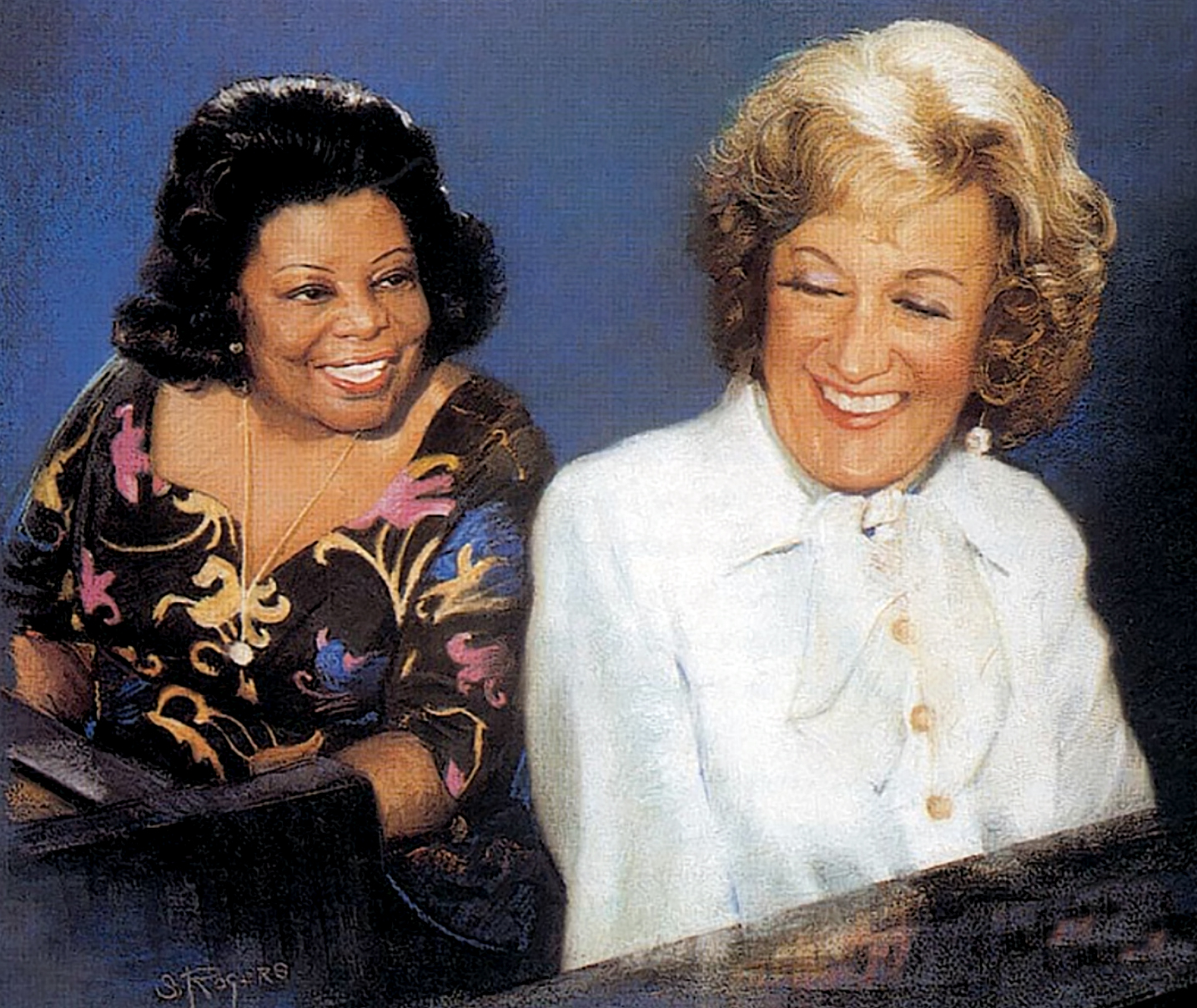
Marian McPartland and Mary Lou Williams.
One of my favorite piano players, who had an amazingly long life and career, was Marian McPartland. Considered one of the 20th Century’s best female jazz artists, she was born in 1918 in England. When World War II broke out, she joined ENSA (Entertainment National Service Association) and, eventually, the USO in 1944. Here she met cornetist Jimmy McPartland, a well-known Chicago jazz artist, playing in the Dixieland vein. He was one of the original members of the famed Austin High Gang. They married in 1945, making her an American citizen and moving to Chicago, eventually settling in Manhattan. With Jimmy’s encouragement, she began her piano trio career and signed a record deal with Savoy Records under her own name. Tenor sax player Coleman Hawkins called her “a fine, swingin’ piano player.” She was an excellent straight-ahead jazz player. In 1952, she opened at the Hickory House in Manhattan and stayed there until 1962. Her most well-known trio of that era consisted of Joe Morello on drums and Bill Crow on bass. Morello would later leave her to join the famed Dave Brubeck band. Duke Ellington would often be in the audience.
After the Hickory House engagement ended, she joined Benny Goodman for a time. She is one of three women pictured in the iconic photo “A Great Day in Harlem,” (insert photo) along with Maxine Sullivan and Mary Lou Williams. Not only was she a piano player but also a bandleader, composer, arranger, educator, and writer. She ended her career as the host of NPR’s Piano Jazz. It was the longest running cultural program on NPR as well as one of the longest running jazz programs. Her first guest was another well-known jazz player, Mary Lou Williams. Here are some snippets from that show. San Diego’s own Holly Hofmann was a guest on her show also.
I had the pleasure of hearing her live at the Kansas City Women’s Jazz Festival, in the early 1980s. She was charming and a wonderful player. She died in 2003 at the age of 95. What an inspiration!!
HADDA BROOKS
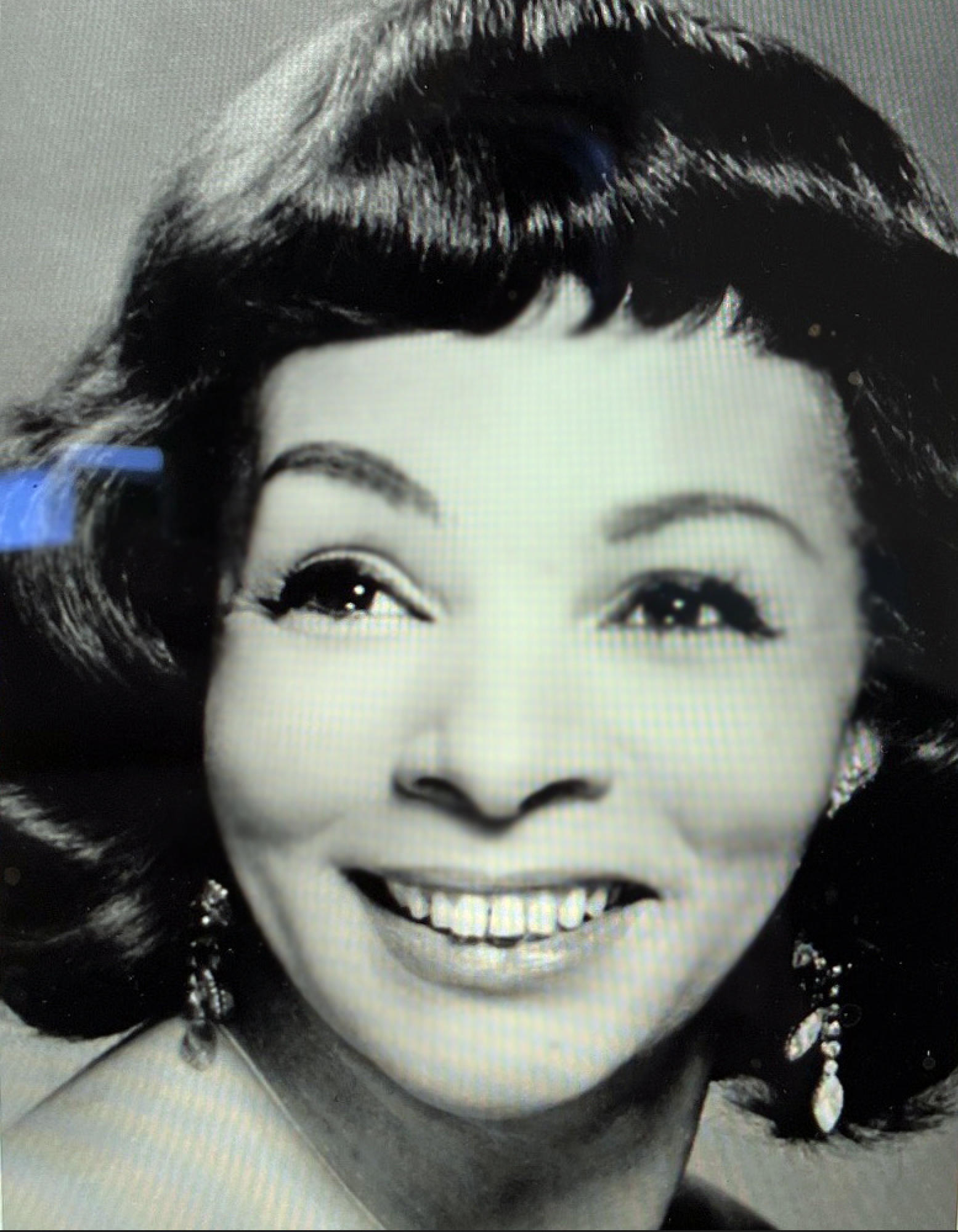
Hadda Brooks
I became aware of Hadda through the excellent series of Rosetta Reitz vinyl recordings, from 1979. Reitz was a feminist and jazz historian, producing 18 albums of early women in jazz and blues, covering the 1920s-1960s. Through the album titled Boogie Blues, I became a huge fan of Hadda’s, known as “Queen of the Boogie,” as she sang torch songs and boogied her ass off!
Hadda was born in 1916 and grew up in Boyle Heights, a suburb of Los Angeles. This became the record label Modern’s first hit and helped build the company into a major early R&B label (that included Etta James, Little Richard, Ike and Tina Turner, and many more). Hadda’s style bridged the big band style with boogie woogie and made way for the rock ‘n’ roll that was soon coming. She became the featured singer with big bands on the famed Central Avenue in Los Angeles during the late ’40s. When she was playing piano with the Charlie Barnett Big Band, he asked her to do an encore and sing. She had never sung in public before! She brought the house down and her career skyrocketed.
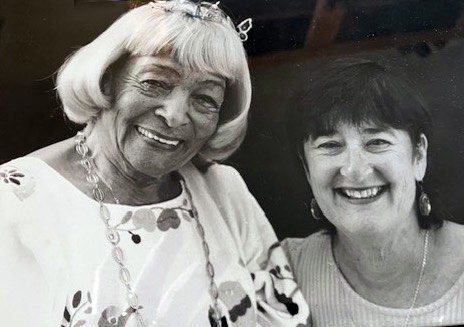
Sue Palmer and Hadda Brooks. Photo by Helen Montgomery Drysdale.
Hadda was a beautiful woman, inside and out. I was very fortunate to meet her through her two longtime friends, Helen Montgomery Drysdale (photographer) and Dayna Carroll (singer). These were two rather eccentric older women who were incensed that I could call myself “Queen of Boogie Woogie,” when the great Hadda Brooks was still alive. I quickly invited them to my next concert, where my singer, Deejha Marie, sang one of Hadda’s hits. Helen and Dayna immediately called Hadda and arranged a wonderful weekend of parties and a show at Dizzy’s. Hadda was the headliner for a boogie woogie show, also featuring myself, Wendy Dewitt from the Bay area, and Philippe LeJeune from Toulouse, France. I was the first performer to play as the hostess, and much to my surprise she got up in the middle of my performance and started playing with me. She went on to charm the sold-out audience. Hadda was fun and could be very funny. Her comedic timing was impeccable Sadly, that was her penultimate show. She died that year, in November 2002.
Among many other honors, she was inducted into the Rhythm & Blues Hall of Fame in 1993. In 1951, she had her own television show, the first by any African American. She made her film debut in a cameo appearance, with Humphrey Bogart, in a film noir, black-and-white classic, called In a Lonely Place. She appeared in several movies as a torch singer. She appeared at Johnny Depp’s hipster nightclub, the Viper Room on Sunset Blvd. as well as Manhattan’s Algonquin Hotel.
Hadda Brooks was a hero of mine (and most of the boogie woogie players I know), and another talented woman with a career lasting over 70 years.
CAMILLE HOWARD
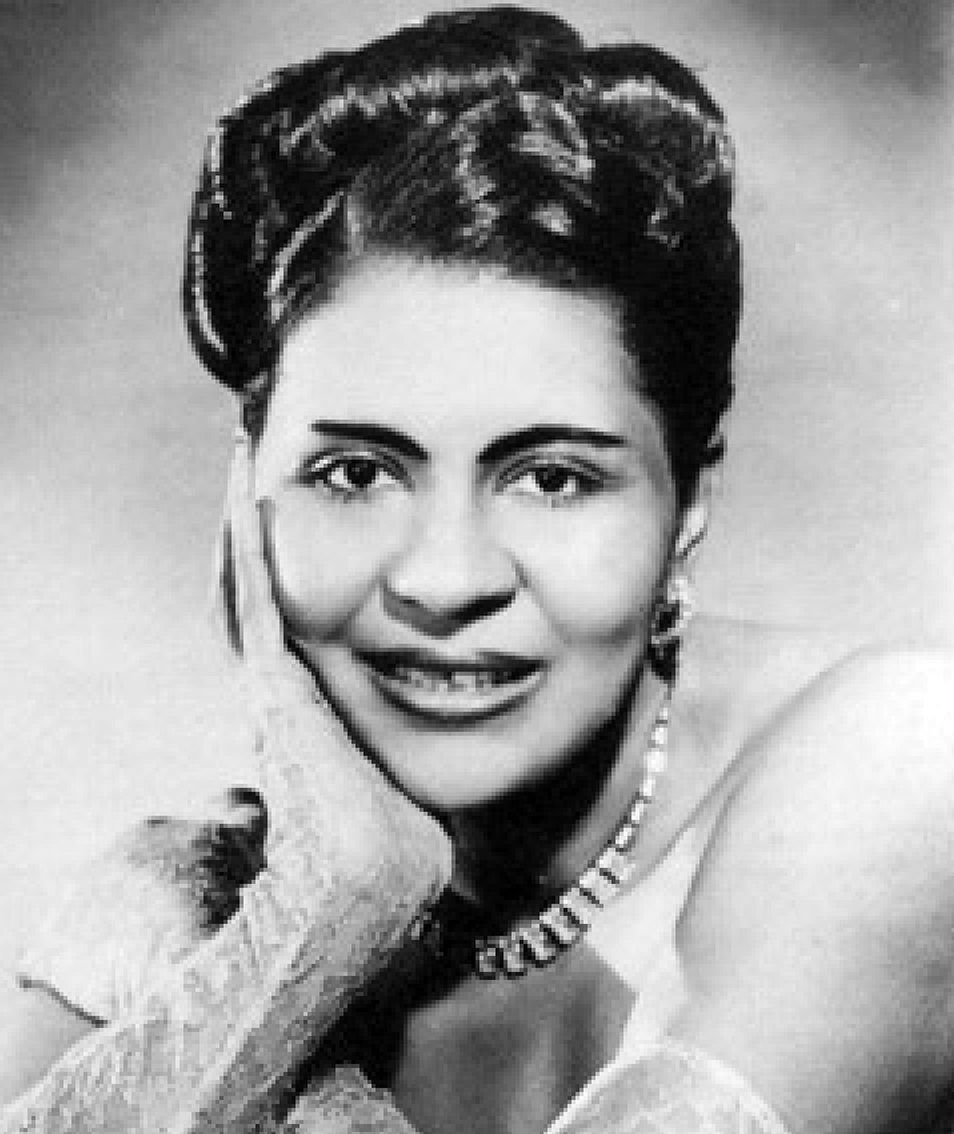
Camille Howard
Of the three women that I am profiling here, I came to know Camille Howard’s work much later, probably in the ’90s. She was born in 1914 and grew up in Galveston, Texas. She made her way to California in 1940 and hooked up with Roy Milton and his Solid Senders. She was a featured performer in the band, on piano and vocals. This is the recording that I first heard of her.
I mentioned Central Avenue in Los Angeles (1920s-1955), but the R&B artists, forebears of the coming rock ‘n’ roll age, far outdrew the jazz artists, except for the bigger names, such as Duke Ellington, Count Basie, and Lionel Hampton. R&B artists like Johnny Otis, Floyd Dixon, Louis Jordan, and Roy Milton were very popular.
I first heard boogie woogie around 1957, in the Baptist Church in Ocean Beach, where I grew up and was hooked on it immediately. Although I didn’t become aware of Camille Howard until 40 years later, I was surprised to find our styles so similar, without knowing about her previously. Of course, I collected many more of her recordings and played many of them in my band, the Motel Swing Orchestra. She is included in many of the Rosetta Reitz collections and many other boogie woogie compilations. She recorded a lot with Roy Milton as well as under her own name, on Art Rupe’s Juke Box and Specialty labels.
Piano-playing singers and their trios were all the rage during World War II and into the early ’50s. Much smaller than big bands, they were cheaper and easier to move around. Camille Howard’s two-fisted boogie style—much like her LA contemporary Hadda Brooks—was as good as anyone, male or female. Her singing was equally bluesy and powerful, and she had lots of top 10 hits on the R&B charts from about 1945-1956.
The growth of rock ‘n’ roll, and her own religious convictions, ended her secular music career in the late ’50s. Fortunately, she was well recorded. She died in LA at the age of 78, in 1992.


